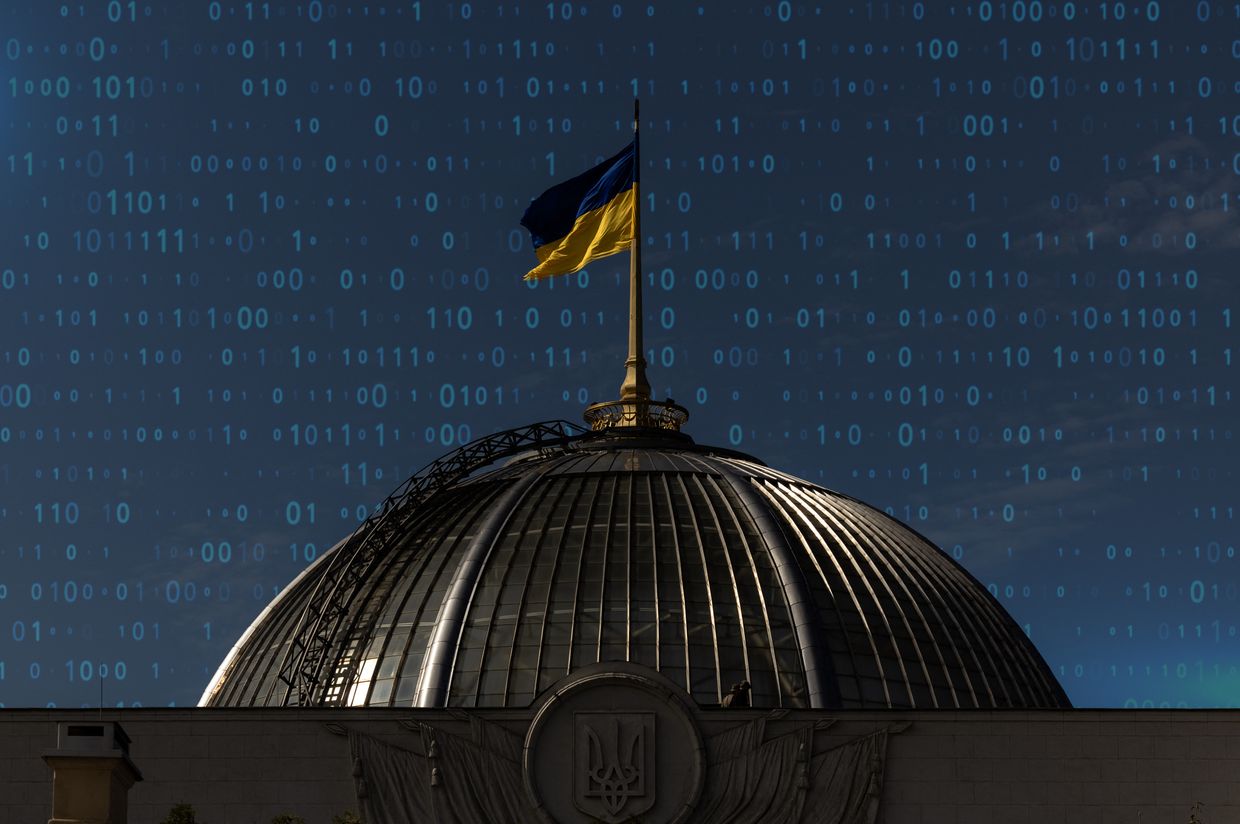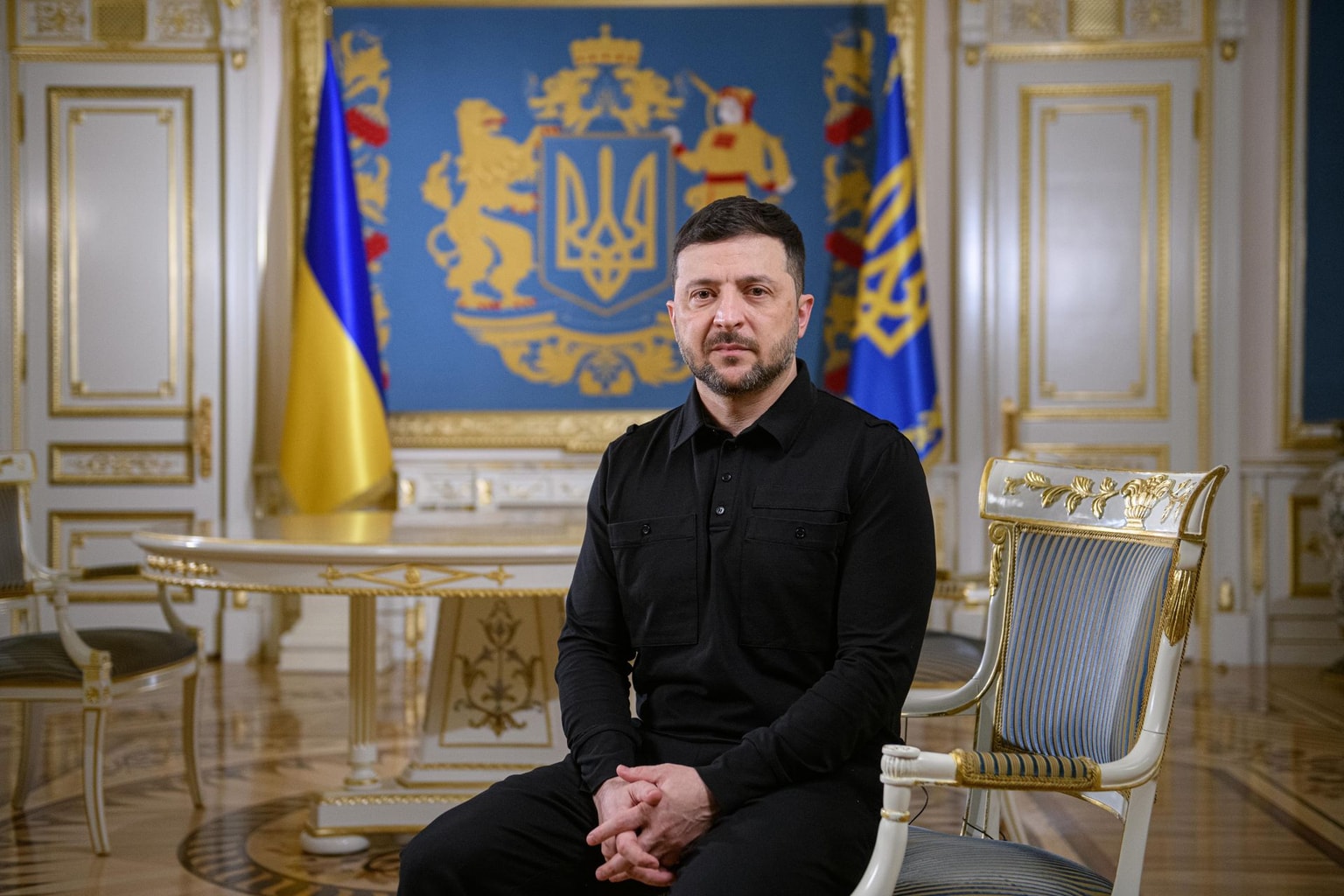
The military branch behind Ukraine’s battlefield apps turns to weapons bureaucracy
Ukraine’s Defense Ministry’s digitization fights to streamline a clunky military machine. But can centralized data hold out in the face of constant Russian cyber attacks?
Soldiers of the 26th Artillery Brigade watch a drone’s flight from laptops while sitting in cover in Donetsk Oblast, Ukraine, on Aug. 19, 2025. (Maks Muravsky / Global Images Ukraine via Getty Images)
Since the start of the full-scale invasion, Ukraine’s military has faced pervasive cyber pressure unprecedented in human history. Cell networks, Starlink terminals, and radio repeaters carry military data and planning from the front line to the distant rear, each vulnerable to interception or disruption.
The enemy on the other side of that line, Russia, meanwhile, has spent the last several decades incubating a brood of maybe the most vicious hackers in the world.
Fortunately for Ukraine, the country has managed to mobilize a huge chunk of its standing army of IT workers into the military. Long before 2022, Ukraine’s IT sector had become a pillar of the country's economy, attracting top talent with high salaries and a range of career paths.
"Miltech is so driven by IT right now because the IT component of any product can implement changes fast," Oksana Ferchuk told the Kyiv Independent in Lviv, where she and her colleagues were attending the IT Arena conference.
One of 11 deputy ministers for Defense, Ferchuk oversees the Defense Ministry’s Digital Transformation Directorate and overall IT initiatives. Her task: turn as much wartime information as possible into software — without letting the Russians get their hands on it — and extend those applications from the front lines to the backstage military bureaucracy.
That digitization mostly takes the form of a series of consumer-style mobile and desktop applications used across the country's armed forces, most famously Delta, which provides wartime mapping. The directorate itself functions like a start-up grafted onto a military — steadily beaming growing amounts of soldier data to the cloud.
"Cloud technology allows you to concentrate (data) in a logical way. In reality, your data is heavily distributed or highly distributed. The enemy does not know exactly which data center to attack," said Ferchuk.
A start-up founder until enlisting in the army in February 2022, Artem Romaniukov rejoined the directorate following a brief stint as a deputy minister at the Strategic Industries Ministry, recently folded up into the Defense Ministry after a massive government reshuffle.
The directorate, Romaniukov told the Kyiv Independent, is a relatively quick-moving sub-unit of the hefty Defense Ministry apparatus, which has its advantages. "Decisions are made quicker. There are fewer stakeholders with whom you have to get everything approved. The Defense Ministry is on its own a great big machine, I don’t know, 100 times bigger than the Strategic Industries Ministry or the Digital Transformation Ministry."
Ferchuk took charge of the Digitization Directorate at roughly the same time as the Strategic Industries Ministry was rolled back into the Defense Ministry, replacing Kateryna Chernohorenko, who had led the operation since early 2023 and launched the mobile applications that remain core to the directorate’s work.
These applications were a means of avoiding siloed paperwork, bureaucracy, and, oftentimes, corruption.
"You know, the government has this tendency toward self-enlargement, Leviathan Syndrome. And when the government grows, it becomes less nimble and less effective," Chernohorenko told the Kyiv Independent. Today, she teaches at Kyiv-Mohyla Business School, but would not rule out a return to public service when asked about future plans.
A fast-growing proportion of Ukraine’s military coordination takes place on these mobile apps. The digitization directorate also launched applications like Army+, which manages official services for active soldiers, like reports to commanders or requests for leave.
Another application, Reserve+ has over 4 million users and tracks recruitment documents and exemptions, linking through the civilian app, Diia, through which Ukrainians do everything from exchanging vehicle titles to registering their marriages. An ever-growing project of the Digital Transformation Ministry, Diia is in many ways the template for the Digitalization Directorate’s apps.

"When I joined, I faced the questions, 'Who is actually ready for recruitment? How do we digitize military registrations since they’ve always been paper?'" said Chernohorenko, who cited her previous experience digitizing Ukraine’s Covid-19 IDs through Diia.
Ferchuk dreams of extending the Reserve+ application to the point that it entirely replaces physical recruitment offices, referred to in Ukraine by its Ukrainian acronym, TSK. TSKs have proved controversial for inconsistent application of mobilization, most dramatically manifest in randomly nabbing men off the street.
Ferchuk’s particular background is strictly civilian, but comes from a series of cellular providers like MTS, the Vchasno online portal for legal document exchange, and a startup that made the backend for Ukrainian contractors to link to Prozorro, Ukraine’s system for managing government tenders.
That background in contract management software finds military parallels, with newer applications like DOT Chain facilitating direct contracting from brigades to arms suppliers.
Recent updates to Army+ in September include means of filing requests for leave and changing the location of service. They further gather data, like whether those requests are the result of an incompetent commanding officer, or whether the soldier filing is returning after going AWOL, part of the slow process of assembling all data about a soldier’s rank, location, and equipment into one place.
"We are setting the systems in a way that nobody can access all the data."
"Army+ right now doesn’t know whether Artem Romaniukov is a major or a lieutenant, whether he serves for the Defense Ministry or a different unit, how much government materiel he has — what kind of weapon and so on — what his rights are, how much money he’s received and how much they still need to pay me so on," said Romaniukov.
An even newer initiative is Impulse, which aims to put even more data on soldiers at the front into a mobile app. The General Staff announced the new application at the start of September, saying "soon the Armed Forces of Ukraine will get an accessible and transparent system for management of personnel on all levels."

Impulse is, the Defense Ministry wrote, the first of its kind to operate at the tactical level, and will be mandatory for all units. The idea is to centralize front-line logistics — consolidating orders and collecting real-time data about which soldiers are physically present at which positions on the front line.
"Our main goal is that Ukraine’s military-political leadership can make strategic decisions on the basis of real-time data," said Oleh Berestovyi, who leads the technological work on securing that data.
The new applications and updates to others are a part of larger efforts to account for soldiers and orders designed to remedy the problems of a massively decentralized military, ranging from corruption to simple chaos, with servicemembers periodically just walking off from unattended positions. Recently, that has resulted in, for example, stray Russian soldiers charging through massive holes in the Ukrainian line near Pokrovsk.
The latest updates to Army+ also aim to fix another long-standing issue: identifying commanding officers. While high-profile figures in the military can publicly decry "stupid objectives" and "unnecessary casualties," ordinary troops have had little recourse when they want to report poor leadership.
A lack of a formal complaints system has often meant commanders are held accountable only after serious mistakes occur. Responsibility for a series of Russian strikes on Ukrainian training exercises was lost in "the fog of bureaucracy," as Mykhailo Drapatyi, commander of the Ground Forces of Ukraine, put it in March. Three months later, Drapatyi resigned following another such attack.
Looking ahead, Ferchuk is working to bring all weapons contractors into a single registry that will connect them with the DOT Chain, the Defense Ministry, and front-line units. The system is expected to include a review mechanism aimed at reducing the flow of substandard equipment to the front — and holding unscrupulous contractors accountable when they fail to deliver after receiving advance payments.

But there are massive potential downsides to such an ambitious digital system. An overarching problem is perpetual Russian cyber attacks, both great and small, which Ferchuk says the directorate faces "constantly, every hour."
Particularly troubling is the prospect of Russian forces capturing Ukrainian soldiers alongside their phones, armed with such sensitive applications. They are, however, highly siloed, said Ferchuk.
"We are setting the systems in a way that nobody can access all the data. Everyone has data based on the principle as much as you need to know to perform your task,” Ferchuk said, envisioning a new massive system of sensors.
"Sometimes people are killed or captured. The sooner we know this information, the sooner we can disconnect their information."











